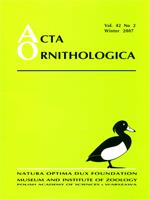Little is known about the physiological causes and consequences of habitat choice decisions in birds. We compared size-corrected body mass, hematocrit, plasma albumin, beta- and gamma-globulin and triglyceride concentrations, as well as the albumin/globulin ratio of female Great Tits breeding in deciduous and coniferous forests in Estonia. Females were sampled during incubation and during the chick-rearing period. Whereas the nest box occupation rate and clutch size were higher in the deciduous habitat, the female nutritional condition during incubation was better in the coniferous habitat. This habitat difference in condition was not explained by the differences in the start of egg-laying or clutch size. Females lost more mass from incubation to the chick-rearing stage in the coniferous than in the deciduous forests. Although the values of most blood parameters changed from incubation to the chick-rearing stage, no habitat-related change was observed. There were no habitat differences in the number and quality of fledglings or in female condition during the chick-rearing period. Our results indicate that incubating female Great Tits are in a worse nutritional state in the preferred deciduous habitat fragments than those in the non-preferred coniferous habitat. However, habitat-related differences in condition during incubation seem to be unrelated to habitat-specific reproductive decisions.
How to translate text using browser tools
1 December 2007
Physiological Condition of Incubating and Brood Rearing Female Great Tits Parus major in Two Contrasting Habitats
Priit Kilgas,
Vallo Tilgar,
Marko Mägi &,
Raivo Mänd

Acta Ornithologica
Vol. 42 • No. 2
December 2007
Vol. 42 • No. 2
December 2007
breeding cycle
Great Tit
habitat differences
Hematocrit
Parus major
plasma proteins
TRIGLYCERIDES




